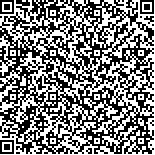| 引用本文: |
-
邓力,苏远玉,徐国梁,刘婧,张殷蕾,宋利沙,廖国健,冯世鑫,张坤,梁文静,万凌云,韦树根.土茯苓苗期炭疽病病原菌的鉴定、生物学特性及防治药剂筛选[J].广西科学,2024,31(3):500-512. [点击复制]
- DENG Li,SU Yuanyu,XU Guoliang,LIU Jing,ZHANG Yinlei,SONG Lisha,LIAO Guojian,FENG Shixin,ZHANG Kun,LIANG Wenjing,WAN Lingyun,WEI Shugen.Identification,Biological Characterization and Fungicide Screening for Anthracnose Pathogen in the Seedling Stage of Smilax glabra[J].Guangxi Sciences,2024,31(3):500-512. [点击复制]
|
|
| |
|
|
| 本文已被:浏览 571次 下载 408次 |

码上扫一扫! |
| 土茯苓苗期炭疽病病原菌的鉴定、生物学特性及防治药剂筛选 |
|
邓力1, 苏远玉1, 徐国梁1, 刘婧1, 张殷蕾1, 宋利沙2, 廖国健2, 冯世鑫2, 张坤2, 梁文静2, 万凌云2, 韦树根2
|
|
|
| (1.广西壮族自治区国有钦廉林场, 广西 钦州 535000;2.广西壮族自治区药用植物园, 广西道地药材高品质形成与应用重点实验室, 广西 南宁 530023) |
|
| 摘要: |
| 为明确土茯苓(Smilax glabra)苗期炭疽病病原菌的种类及生物学特性,筛选出有效的防治药剂,本研究通过对土茯苓苗期炭疽病病原菌进行分离纯化和致病性测定,采用形态和多基因序列(ITS、TUB、ACT、GAPDH和CHS)来确定病原菌的分类地位,并对其病原菌生物学特性以及4种杀菌剂对病原菌的室内毒力进行测定。结果表明,土茯苓苗期的病原菌为可可炭疽菌(Colletotrichum theobromicola),该菌的最适培养基为沙氏培养基,全光照、28 ℃、pH值为4的条件下有利于菌丝生长,最佳碳源为麦芽糖和葡萄糖,最佳氮源为硝酸钾和蛋白胨,菌丝致死温度为55 ℃。4种杀菌剂对土茯苓炭疽菌病原菌的菌丝生长均表现出较强的毒力,具有较好的抑制效果,其中450 g/L咪鲜胺水分散粒剂(WG)的毒力最强,半数效应浓度(EC50)值为0.030 8 mg/L;250 g/L丙环唑乳油(EC)的毒力最弱,EC50值为0.561 7 mg/L。研究结果可为土茯苓炭疽病的识别和防治提供科学依据。 |
| 关键词: 土茯苓 炭疽病 病原菌鉴定 生物学特性 药剂筛选 |
| DOI:10.13656/j.cnki.gxkx.20240522.001 |
| 投稿时间:2024-02-22修订日期:2024-05-13 |
| 基金项目:广西中医药多学科交叉创新团队项目(GZKJ2305)和广西道地药材高品质形成与应用重点实验室项目(ZJC2020003)资助 |
|
| Identification,Biological Characterization and Fungicide Screening for Anthracnose Pathogen in the Seedling Stage of Smilax glabra |
|
DENG Li1, SU Yuanyu1, XU Guoliang1, LIU Jing1, ZHANG Yinlei1, SONG Lisha2, LIAO Guojian2, FENG Shixin2, ZHANG Kun2, LIANG Wenjing2, WAN Lingyun2, WEI Shugen2
|
| (1.State-owned Qinlian Forest Farm of Guangxi Zhuang Autonomous Region, Qinzhou, Guangxi, 535000, China;2.Guangxi Key Laboratory of High-Quality Formationand Utilizationof Dao-di Herbs of Guangxi Zhuang Autonomous Region, Guangxi Botanical Garden of Medicinal Plants, Nanning, Guangxi, 530023, China) |
| Abstract: |
| In order to identify and characterize the pathogen of anthracnose in the seedling stage of Smilax glabra,and screen out effective fungicides for the prevention and control of this disease.The pathogen of anthracnose was isolated from S.glabra,and the pathogenicity of the isolate was determined.Morphological characteristics and multiple gene sequences (ITS,TUB,ACT,GAPDH and CHS) were used to identify the pathogen.Furthermore,the biological characteristics of the pathogen were examined,and the indoor toxicity test was carried out for four fungicides against this pathogen.The results showed that Colletotrichum theobromicola was the pathogen causing anthracnose in the seedlings of S.glabra.The optimal culture conditions for the mycelial growth of the pathogen were Sabourand's medium,full light,28 ℃,and pH value of 4.The optimal carbon sources were maltose and glucose,and the optimal nitrogen sources were potassium nitrate and peptone.The lethal temperature of mycelium was 55 ℃.The four fungicides showed strong toxicity and inhibitory effects on the mycelial growth of the pathogen.Among them,450 g/L prochloraz Water Dispersible Granule (WG) was the most toxic,with the median Effect Concentration (EC50) of 0.030 8 mg/L.The toxicity of 250 g/L propiconazole Emulsifiable Concentrate (EC) was the weakest,with the EC50 of 0.561 7 mg/L.The results provide a scientific basis for the identification and prevention of anthracnose in the cultivation of S.glabra. |
| Key words: Smilax glabra anthracnose pathogen identification biological characteristics fungicide screening |
|
|
|
|
|